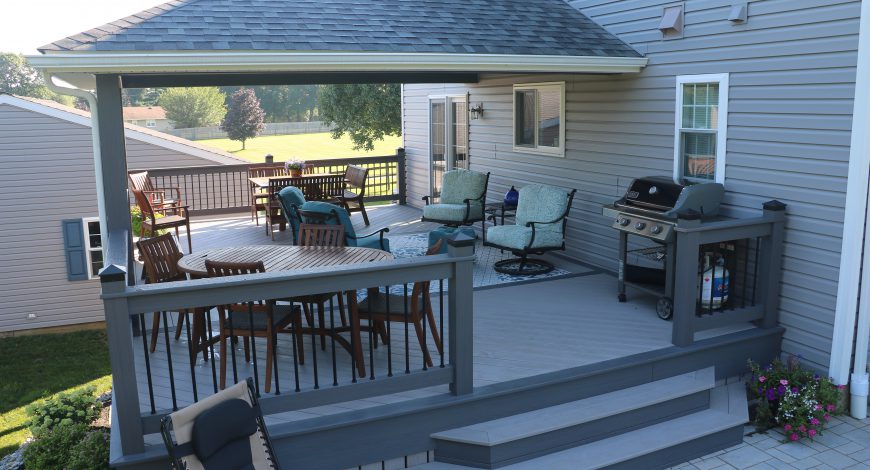What is a patio roof?
A patio roof is a structure designed to provide shade and protection from inclement weather over an outdoor living or dining space. Not only does it enhance the aesthetic appeal of your property, but it also allows you to utilize the outdoor space throughout the year and provides protection for your outdoor furniture and other belongings. Having a patio roof can significantly increase the value of your property and create a versatile and functional outdoor living space. In this section, we will discuss the various benefits of having a patio roof and how it can enhance your outdoor living experience.
Benefits of having a patio roof
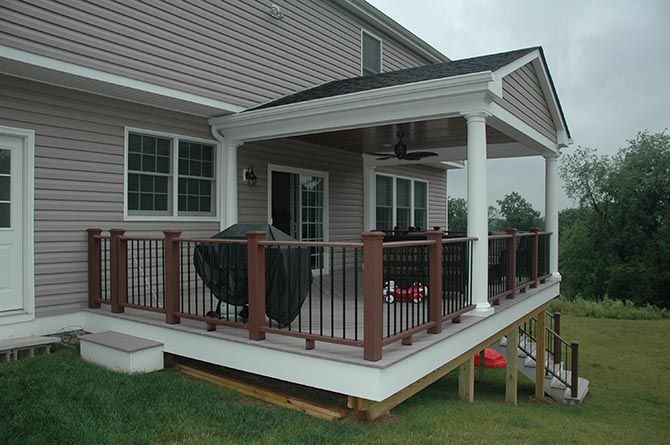
Having a patio roof is an excellent way to make the most out of your outdoor space. It provides a wide range of benefits that homeowners cannot ignore. The benefits of having a patio roof range from practical to aesthetic, making it a popular choice among homeowners who are looking to enhance their outdoor living space.
One of the most significant benefits of having a patio roof is that it provides additional outdoor living space. This space can be used for a variety of purposes, including outdoor dining, relaxing, or entertaining guests. The roof creates an inviting area that can be utilized throughout the year, regardless of the weather conditions. Additionally, it provides protection from the elements such as inclement weather and sunlight, ensuring that your outdoor living space remains comfortable and functional.
Patio roofs also add value to a home by creating an extension of the indoor living space to the outdoors. This extension can be designed to complement the existing architecture and style of your home. Prospective buyers will view the patio roof as an added perk, increasing the value of your property.
While a patio roof itself provides a useful addition to any home, some add-ons and accessories could enhance the experience even further. For example, fireplaces are a great addition to outdoor living spaces, creating warmth and an inviting ambiance. Outdoor kitchens allow homeowners to cook and entertain guests simultaneously, making it a perfect place for hosting gatherings. Entertainment systems add another layer of functionality to the space, allowing you to watch movies or listen to music.
Patio covers also tie into the home’s exterior, creating an extension of the comfort inside the home to an outdoor space. This connection enhances the overall appeal of the home while providing a perfect place to host gatherings, parties, and other events that will be remembered for a lifetime.
Overall, a patio roof adds value, versatility, and functionality to a home while providing protection from the elements. It serves as an extension of the indoor living space to the outdoors and is a perfect place to host gatherings. By adding a patio roof, homeowners can enjoy additional outdoor living space while increasing the value of their property.
Factors that Affect the Cost
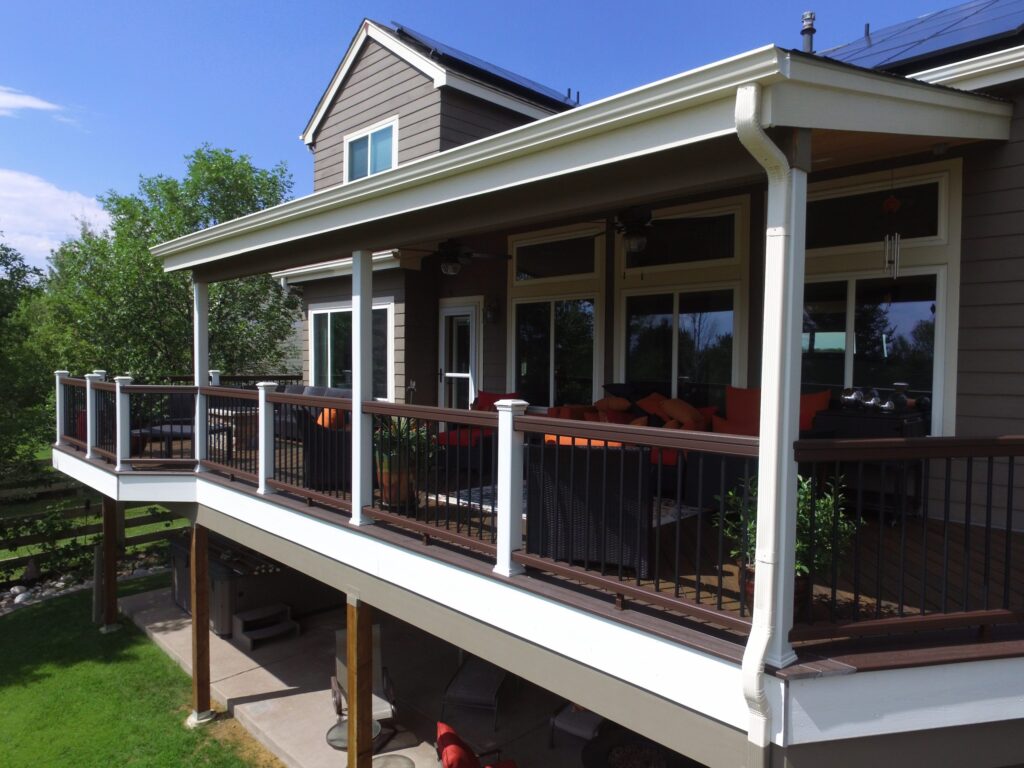
When it comes to adding a roof to your patio, there are numerous factors that can affect the overall cost of the project. First and foremost is the overall square footage of the roof, as this will directly impact the cost of both materials and labor. Additionally, the type of roofing material selected can play a big role in cost, with more expensive materials such as clay tiles driving up the overall price.
Homeowners will also need to choose between gable roofs and louvered roofs, both of which have their own price points and associated costs. Labor costs and additional cost factors, such as the need for permits or customization options, can also impact the final price of the project. Ultimately, the choice of roof style and material will dictate the level of protection from rain, inclement weather, and sunlight provided by the roof.
Luckily, there are many versatile material options for patio roofs that can help homeowners achieve their desired level of protection within their budget. For those looking for added protection, shade sails or retractable awnings can be added to the patio space at an additional cost.
Square Footage
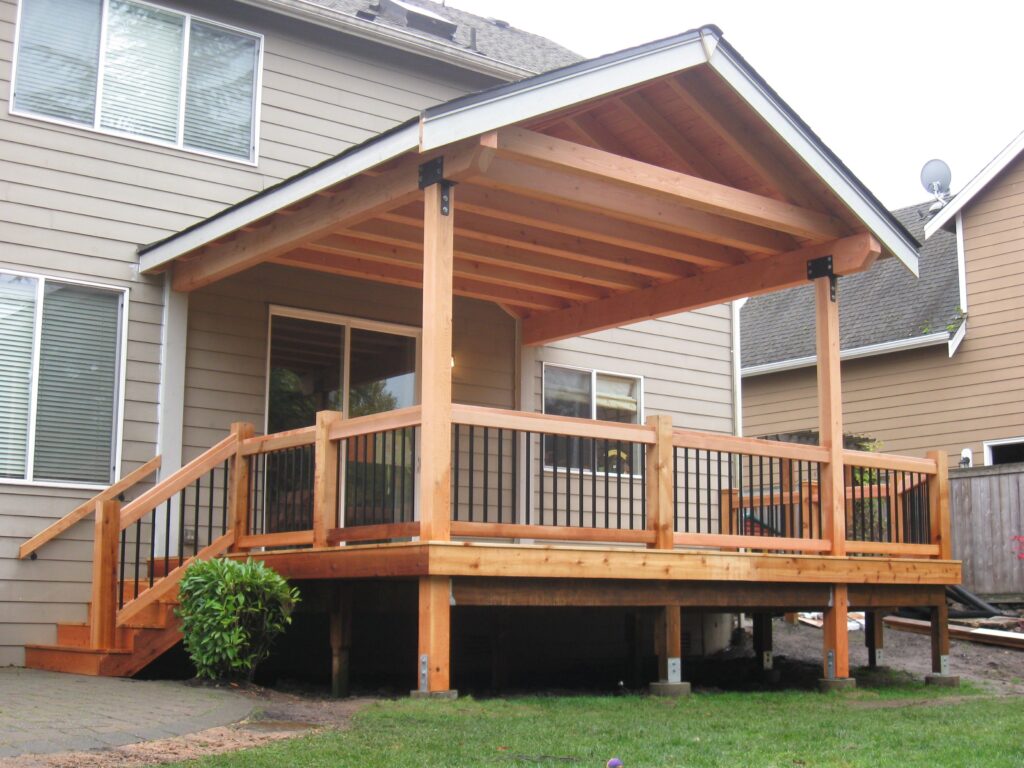
When planning to add a roof to your patio, understanding the square footage of the enclosed space is essential. The cost of building a patio roof is significantly impacted by the size of the area being covered. Therefore, it is crucial to measure the entire patio area to get an accurate estimate of the cost of materials needed for the project.
The larger the square footage, the more materials will be required, which can increase the overall cost. Moreover, larger patio roofs may require more labor and installation time, further adding to the total expenses. It is vital to take into account these additional costs associated with a larger patio roof when planning your project’s budget.
To ensure that the project stays within budget, homeowners should work with a reliable contractor that can help estimate the total cost of materials and labor involved. By measuring the square footage of the patio and getting a detailed quote from a reputable professional, homeowners can make informed decisions and find the best options for their budget.
In sum, understanding the square footage of the patio is essential when considering the cost of building a patio roof. Larger patio roofs require more materials, labor, and installation time, which will impact the project’s total cost. By working with a professional and estimating the total cost of the project, homeowners can ensure that their patio roof project stays within their budget.
Type of Roofing Material

Choosing the right roofing material for your patio is a crucial decision that requires careful consideration of your budget, weather conditions, and style preferences. There are several types of materials that can be used for patio roofs, including aluminum, fabric, vinyl, and wood. Each of these options has its pros and cons, and it is important to assess the features of each to make an informed decision.
Wood roofing is a classic and affordable option that offers a natural and timeless look to any patio. However, wood requires maintenance and may not be suitable for harsh weather conditions. It can also be prone to rotting and warping if not appropriately treated and maintained regularly.
On the other hand, aluminum roofing is known for its durability and resistance to rust. It is an ideal material for areas with harsh weather conditions, as it can withstand strong winds and heavy rain. While the initial cost of aluminum roofing may be higher than wood, its long-lasting durability makes it a cost-effective option in the long run.
If you’re looking for a cost-effective and versatile material for your patio roof, fabric or vinyl covers may be the way to go. Retractable awnings or shade sails made from these materials provide an inexpensive option to protect your patio from inclement weather. However, it’s important to note that fabric or vinyl covers require proper maintenance and may not provide the same level of protection as wood or aluminum roofing.
Overall, choosing the appropriate type of roofing material for your patio involves a careful consideration of various factors such as weather conditions, budget, and the desired look and feel of your outdoor living space. It’s important to work with a reputable contractor who can help guide you through the types of covers available and estimate the costs and benefits of each option to ensure that you choose the best material for your specific needs and budget.
Gable Roofs vs. Louvered Roofs
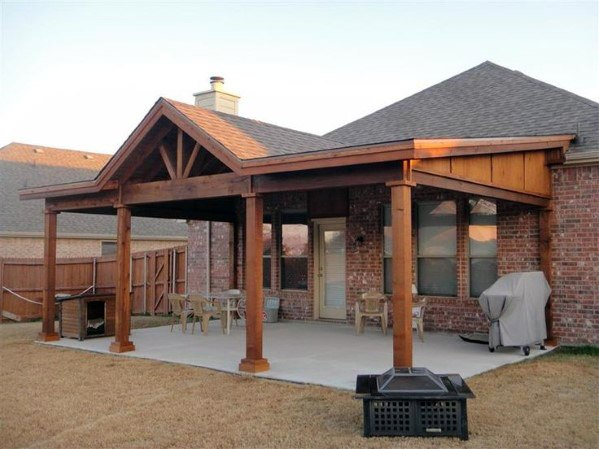
When it comes to putting a roof over your patio, you have a variety of options to choose from, including gable roofs and louvered roofs. A gable roof is a popular choice due to its simple and traditional look, featuring two sloping sides that meet at the top to form a peaked shape resembling a triangle. It provides excellent protection from inclement weather while also enhancing the curb appeal of your home.
On the other hand, a louvered roof is a more modern and versatile option. Unlike a gable roof, it has adjustable blades that can be angled to offer partial or complete shade or allow sunlight in as needed. This makes it a perfect choice if you want more control over the amount of light that enters your patio while still providing protection from the elements. Louvered roofs are also highly durable, able to withstand harsh weather conditions and require minimal maintenance.
Ultimately, whether you choose a gable or a louvered roof depends on your personal preference and the style of your home. If you prefer a traditional look, a gable roof may be the perfect option for you. If you want more flexibility, versatility, and modern aesthetics, a louvered roof may be a better fit. With both of these options, your patio can transform into a cozy and comfortable outdoor living space that you can enjoy throughout the year.
Popular Choice and Price Range
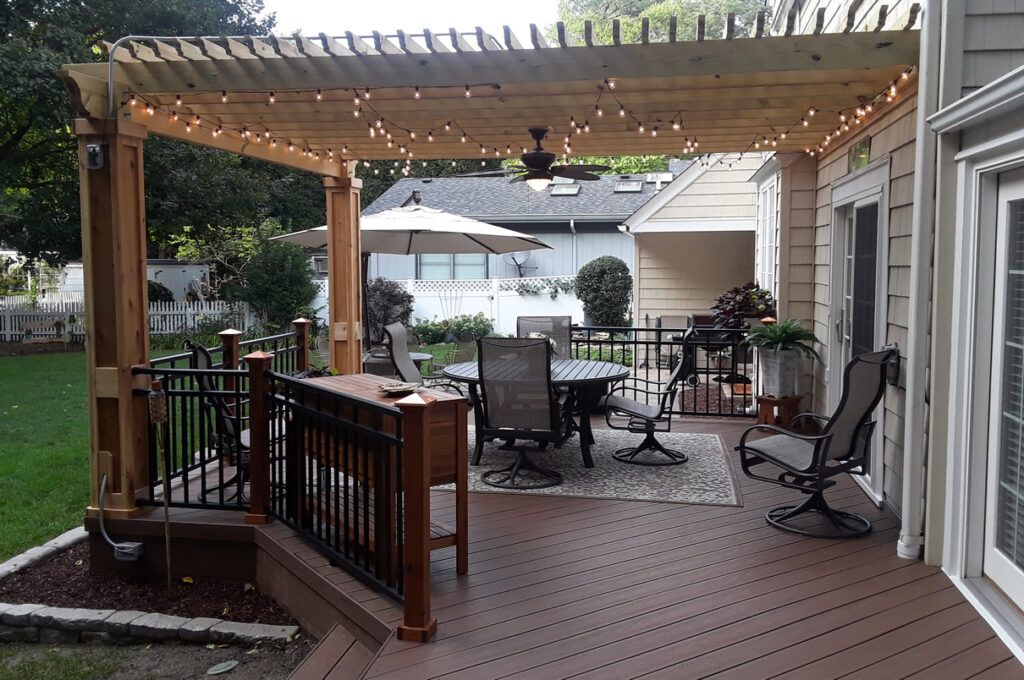
Patio roofs are a popular addition to any home with outdoor space, providing shelter from the sun and rain while enhancing the outdoor living experience. There are various patio cover styles to choose from, each with its unique advantages and price range. Let’s take a look at some of the popular choices in the market and their corresponding price range.
Gable roofs are a classic choice consisting of two sloping sides forming a peaked shape. They add a traditional touch to the outdoor space while providing excellent protection from inclement weather. Gable roofs are popular because they are easy to construct and cost-effective. The material cost for a gable roof falls in the low to mid-range, but the labor cost may be higher if the roof structure is complex.
Retractable awnings are another popular choice for homeowners looking for a versatile and affordable patio covering. They are easy to install and require very minimal maintenance. Retractable awnings can be used to control the amount of sunlight that enters the patio, and they provide protection from the rain. Retractable awnings are a cost-effective option, with material and labor costs falling in the low to mid-range.
Louvered roofs are a modern and most versatile option that has gained immense popularity in recent years. They consist of adjustable blades that can be angled to provide partial or complete shade or to allow sunlight in as required. Louvered roofs are also highly durable and able to withstand harsh weather conditions. They have a relatively high material and labor cost, falling in the mid to high-end range. However, the versatility they provide, combined with their durability, makes them a popular choice for homeowners who want the best of both worlds.
In conclusion, each type of patio cover style has its own price range, with material and labor costs varying accordingly. As a homeowner, it’s essential to choose a patio covering that fits your budget while providing the required functionalities and aesthetics. Don’t forget to factor in the durability and longevity of the chosen materials, as it can have a significant impact on the cost-effectiveness of the investment in the long-term.
Labor Cost and Additional Cost Factors
One of the significant costs to consider when building a patio roof is labor cost. Labor cost typically runs between $20-$40 per square foot for patio enclosures. This cost can vary depending on the complexity of the roof structure and the chosen material. For instance, constructing a gable roof made with wooden beams would require more labor than installing a retractable awning.
Besides the labor cost, there are additional cost factors to consider when building a patio roof. The type of material chosen is one of the most significant cost factors. For instance, using high-quality clay tiles for a patio roof add more to the overall cost than using an aluminum roof. Similarly, additional features like fans, lighting, or a sound system can add significantly to the final cost.
One other cost factor that homeowners should consider is permit costs. When building a patio roof, you may need to obtain permits from your local authority. The permit cost varies from location to location, and the approval process may take some time, which can lead to additional costs due to delays. It is essential to check with your local authority to determine the requirements for obtaining permits and factor this cost into the overall budget.
In conclusion, besides the material costs and labor costs, several additional cost factors should be considered when building a patio roof, such as the roof structure, additional features, and permit costs. These factors can significantly influence the final cost of the project, and it is essential to keep them in mind when planning for a roof over your patio.
Protection from Rain, Inclement Weather, and Sunlight

Having a covered patio can provide homeowners with an ideal solution to their concerns about rain, inclement weather, and sunlight. A covered patio is perfect for homeowners who love spending time outdoors, even when the weather is not ideal. With a patio roof, homeowners can enjoy the outdoors without being restricted by the weather conditions.
The benefits of a patio roof are immense. Homeowners can entertain and enjoy the outdoors year-round, without the worry of unexpected weather changes. A covered patio can also increase the value, functionality, and appeal of your outdoor living space.
Without a patio roof, weather conditions can have several negative impacts on outdoor decks and patios. Inclement weather like heavy rains and strong winds can be detrimental to wood and concrete surfaces, causing them to become slippery, damaged, or even dangerous. The lack of a patio roof can also limit the amount of time you can spend on your decks or patios, restricting your ability to enjoy the outdoors to the fullest.
A patio roof can serve as an effective solution to these concerns. It provides protection against the elements, keeping you and your guests dry during rainy weather and providing a shield against strong winds. A covered patio also shields you from direct sunlight, allowing you to enjoy your outdoor living space without any concerns about harmful UV rays.
In summary, a covered patio allows homeowners to entertain and enjoy their outdoor living space without restrictions or fear of inclement weather. It provides protection from rain, strong winds, and sunlight, allowing homeowners to invest in their outdoor living areas without worrying about the negative impacts of weather conditions.
Versatile Material Options for Patio Roofs
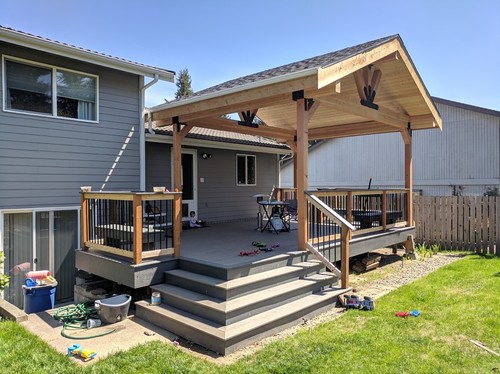
When it comes to patio roofs, homeowners have a wide range of material options to choose from. Some of the most versatile materials for patio roofs include extruded aluminum, wood, clay tiles, fiberglass, and PVC. Each of these materials has its unique characteristics and advantages, making them suitable for different outdoor living situations.
Extruded aluminum is a popular choice among homeowners due to its strength, durability and minimal maintenance requirements. It is also lightweight and corrosion-resistant, making it ideal for areas experiencing harsh weather conditions. Extruded aluminum is a durable material that can withstand the test of time and provide protection to your patio for years.
Wood is a classic, organic material that offers a warm and cozy feeling to any outdoor space. However, it is prone to rot, termites, and other types of damage, which can cause it to deteriorate rapidly. Regular maintenance is required to keep wood in good condition. It is important to note that wood is not a suitable option for areas that experience heavy rain and harsh weather conditions.
If you are looking for a material that offers an elegant touch to your outdoor space, clay tiles would be an excellent choice. Clay tiles are a durable option that can withstand harsh weather conditions. However, they are more expensive and require more maintenance than other materials. It is important to consider the long-term cost when choosing clay tiles as a material option for your patio roof.
Fiberglass and PVC are inexpensive materials that last longer than wood and require less maintenance. These materials are lightweight and easy to install, making them an excellent option for DIY homeowners. However, they are not as durable as aluminum and may require replacement over time. It is essential to consider the type of weather conditions in your area before choosing these materials for your patio roof.
In conclusion, there are several versatile material options to choose from when it comes to patio roofs. Each material has its unique advantages, making them suitable for different outdoor living spaces. It is essential to consider the specific weather conditions in your area and to choose a material that fits within your budget.
Shade Sails or Retractable Awnings for Added Protection
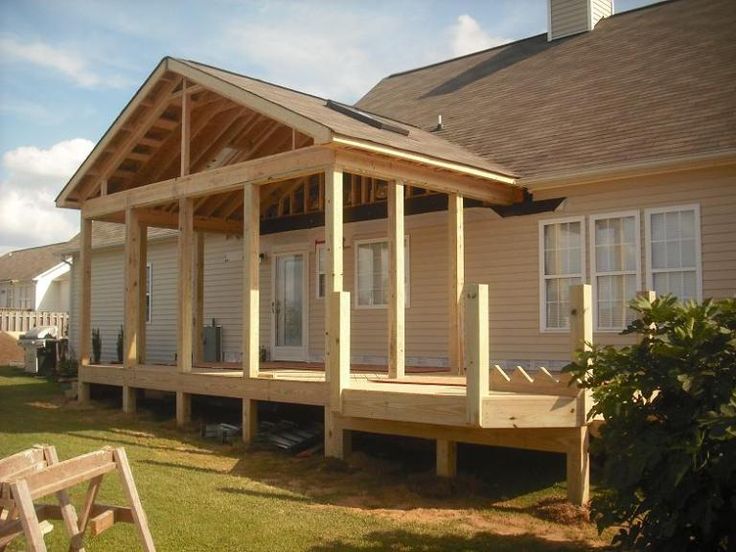
If you’re looking for a more versatile yet affordable option for protection from the sun and rain, shade sails and retractable awnings could work for you. These options provide additional protection to help you get the most out of your outdoor living space.
Shade sails are made of canvas pulled taut to create a flat roof that provides a break from the sun without obstructing the view. They’re attached to the deck posts using strong cables or ropes and can be taken down when not needed. Shade sails are a seasonal protection option and are relatively inexpensive, costing only $1 to $2 per square foot. They’re a great choice for those who want an affordable and easy-to-install option.
Retractable awnings, on the other hand, offer a semi-permanent alternative that can be retracted to allow in more natural light or fresh air. Retractable awnings come in a variety of materials, styles, and price ranges, with the average cost ranging from $2,000 to $3,500 installed. With retractable awnings, you’ll get added protection from the sun and rain, plus the convenience of being able to retract it when the weather gets rough.
While patio roofs offer the most permanent and expensive option for protection from the elements, shade sails and retractable awnings offer versatility and convenience. Shade sails are perfect for those who want an affordable and easy-to-install option, while retractable awnings offer the convenience of being able to retract them when the weather changes. Ultimately, it’s up to you to decide which option will work best for your needs and budget.
Conclusion
In conclusion, this article has provided valuable insights into the cost of installing a roof over a patio. We have discussed various factors that impact patio roof cost, including square footage, labor cost, roof structure, and type of roofing material.
Having a patio roof offers numerous benefits, including protection from inclement weather, added curb appeal, and increased property value. While cost is an important factor, it’s important to carefully consider the type of material and roof style for the patio covering.
Luckily, there are many versatile patio covering options available, from louvered roofs to shade sails and retractable awnings. Each option offers unique benefits, such as adjusted sun exposure or easy seasonal adjustments.
In choosing the perfect patio covering, it’s essential to talk to a professional contractor who can offer advice based on your specific needs and budget. It’s worth noting that while some patio roof options may seem expensive upfront, they can save you money in the long run by lowering energy costs and requiring less maintenance.
In the end, the investment you make in your patio covering will pay off with ample years of protected outdoor space and increased curb appeal.
FAQs
FAQs: Covered Decks and Patios
Here are some of the frequently asked questions about covered decks and patios, along with informative and concise answers to help you make an informed decision:
1. What’s the average cost of adding a roof or cover to a deck or patio?
The cost of adding a roof or cover to a deck or patio varies depending on several factors such as the size of the area, design, materials, and type of roof. Generally, the cost can range from $500 to $20,000 or more. To get an accurate estimate, it’s best to consult with a contractor who can assess your specific needs and budget.
2. Do covered decks and patios increase home value?
Yes, they do. Covered decks and patios provide extra functional space for relaxing, dining, and entertaining. They extend the usable living space of the home, which can increase its overall value.
3. What are the best materials for patio roofs and deck covers?
The best materials for patio roofs and deck covers depend on your needs and budget. Common materials include wood, aluminum, vinyl, and fiberglass. Wood is a popular choice for its natural aesthetic and durability. Aluminum is low-maintenance and resists the elements. Vinyl and fiberglass are versatile and cost-effective.
4. Are there options for covering a patio or deck on a budget?
Yes, there are budget-friendly options available, such as shade sails, awnings, and umbrellas. Shade sails are a popular and affordable option for providing partial shade and shelter from the sun. Awnings offer full coverage and protection from the rain, making them ideal for areas with unpredictable weather.
5. What are some benefits of having a covered deck or patio?
Covered decks and patios provide a range of benefits, such as protection from the sun, rain and snow, added living space, increased property value, and improved curb appeal. With a covered outdoor area, you can enjoy the beauty of nature while staying comfortable and protected from the elements.
In conclusion, covered decks and patios provide many benefits and can significantly increase the value of your home. By considering factors such as materials, cost, and design, you can customize a patio or deck cover that fits your specific needs.

